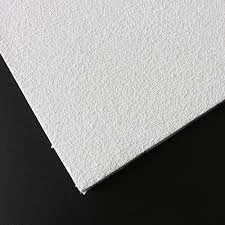Dec . 26, 2024 20:20 Back to list
Ceiling Support Systems Utilizing Grid Bars for Enhanced Structural Integrity
Exploring Ceiling Grid Bars A Vital Component of Modern Architecture
When it comes to modern architecture and interior design, one often overlooked yet essential component is the ceiling grid bar system. This structural feature serves not only as a foundational element to support ceilings but also plays a significant role in enhancing the aesthetic appeal of interior spaces. In this article, we will delve into the functions, benefits, and diverse applications of ceiling grid bars, demonstrating their importance in contemporary building designs.
Understanding Ceiling Grid Bars
Ceiling grid bars are metal frameworks that create a suspended ceiling system. Composed primarily of lightweight aluminum or galvanized steel, these bars form a network that supports acoustic tiles, drywall, or decorative panels. The grid system is modular, allowing it to be adjusted easily to accommodate different ceiling heights and designs. Generally, the grid is installed perpendicular to the main beams of a structure, creating a uniform plane where various ceiling tiles or panels can be attached.
Key Functions of Ceiling Grid Bars
1. Structural Support The primary role of ceiling grid bars is to support the weight of the ceiling material. This ensures that the ceiling remains stable over time, reducing the risk of sagging or collapse.
2. Concealment of Infrastructure In commercial buildings, ceiling grid bars provide an effective way to hide electrical wiring, plumbing, HVAC ducts, and other essential infrastructure from plain sight. This not only creates a cleaner aesthetic but also facilitates easier access for maintenance purposes.
3. Acoustic Control Many ceiling tiles designed to fit within the grid system are engineered for acoustic control. This is particularly important in spaces such as offices, schools, and auditoriums where sound quality can greatly affect functionality.
4. Lighting Integration Ceiling grid bars allow for the seamless incorporation of lighting fixtures. Designers can choose various styles of lighting—whether recessed, pendant, or surface-mounted—ensuring illumination does not disrupt the overall design of the space.
5. Design Flexibility The modular nature of ceiling grid systems permits flexibility in design. Interior designers can mix and match different types of ceiling tiles and configurations to create unique visual effects that align with the desired ambiance of a space.
ceiling grid bars

Benefits of Ceiling Grid Bars
1. Cost-Effective Investing in a ceiling grid bar system can be cost-effective for both new constructions and renovations. It reduces the need for extensive structural modifications and provides a straightforward solution for ceiling installations.
2. Quick Installation Compared to traditional ceilings that require framed supports, ceiling grid bars allow for faster installation. This can be particularly advantageous in commercial projects where time constraints are a consideration.
3. Energy Efficiency With proper insulation and soundproofing materials placed within the grid system, energy consumption can be reduced. This leads to a more controlled internal climate and lowers overall heating and cooling costs.
4. Sustainability Many modern ceiling grid systems are made from recyclable materials, contributing to sustainable building practices. Additionally, the versatility of the grid allows for easy replacement of individual tiles, which limits waste during renovations.
Applications of Ceiling Grid Bars
Ceiling grid bars can be found in a multitude of settings. In commercial spaces such as offices, shopping malls, and schools, they provide functionality and design versatility. In residential properties, especially basements and media rooms, ceiling grid systems help create a polished look that conceals unsightly infrastructure. Furthermore, in specialized environments like laboratories and healthcare facilities, ceiling grid bars enable compliance with stringent building codes while maintaining aesthetic appeal.
Conclusion
Ceiling grid bars play a crucial role in modern architecture and interior design. Their multifunctional capabilities—ranging from structural support to aesthetic enhancement—make them an invaluable asset in creating both practical and visually appealing spaces. As designers continue to innovate, the ceiling grid bar system will undoubtedly continue to evolve, driving forward the boundaries of what is possible in contemporary building design. Whether in an office, retail space, or home, ceiling grid bars are integral to achieving the perfect blend of functionality and beauty.
-
Quality Ceiling Trap Doors & Access Panels | Easy & Secure AccessNewsAug.30,2025
-
Durable Ceiling T Grid Systems | Easy InstallationNewsAug.29,2025
-
PVC Gypsum Ceiling: Durable, Laminated Tiles for Modern SpacesNewsAug.28,2025
-
Pvc Gypsum Ceiling Is DurableNewsAug.21,2025
-
Mineral Fiber Board Is DurableNewsAug.21,2025
-
Ceiling Tile Clip Reusable DesignNewsAug.21,2025







